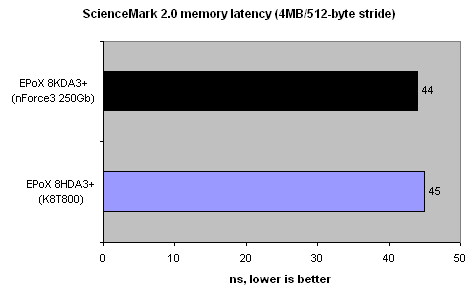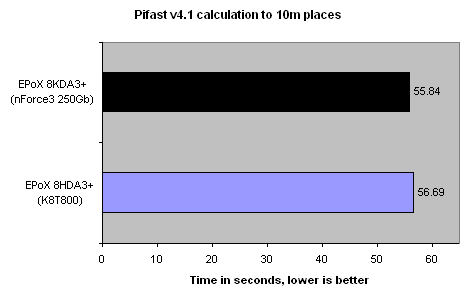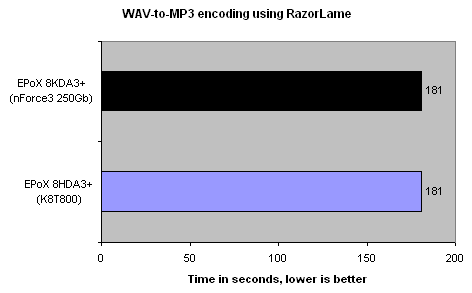ScienceMark 2.0, Pifast, WAV
Starting off with memory bandwidth and latency analysis.
Not much in the two chipsets. There shouldn't be, for AMD's taken a chunk of engineering work out by specifying an on-die memory controller that communicates directly with system memory. That's how NVIDIA has been able to produce a single-chip design of its own.

A touch better on latency, too. Remember that both competing Socket-754 chipsets have little to do with efficiency. The improvements for the nForce3 shouldn't really arise with respect to performance, they should manifest themselves in a fuller, broader feature set.

Pifast, our first practical test, shows that NVIDIA's design has the slight upper hand in initial performance. However. with optimised BIOSes seemingly surfacing every other day, we wouldn't read too much into this. Performance is just where it should be for a well-tuned S754 board.

Nothing to separate EPoX's two Athlon 64 boards in WAV conversion.









